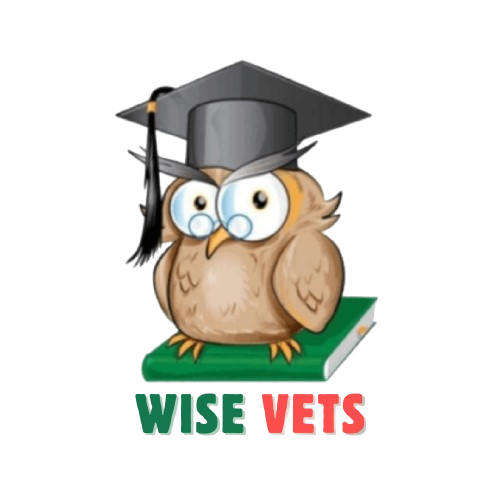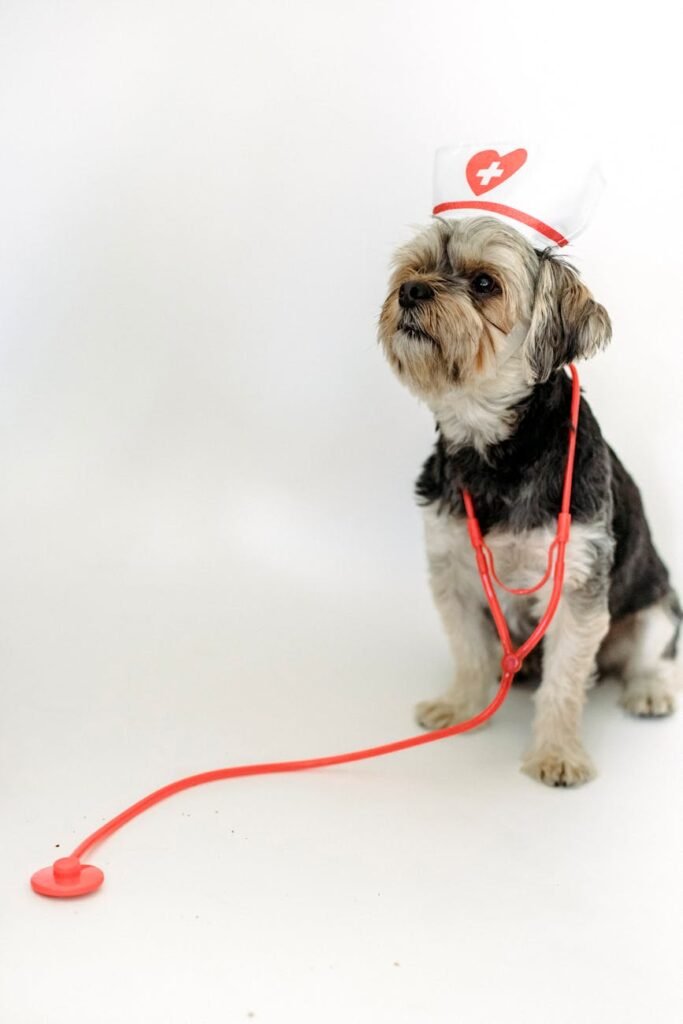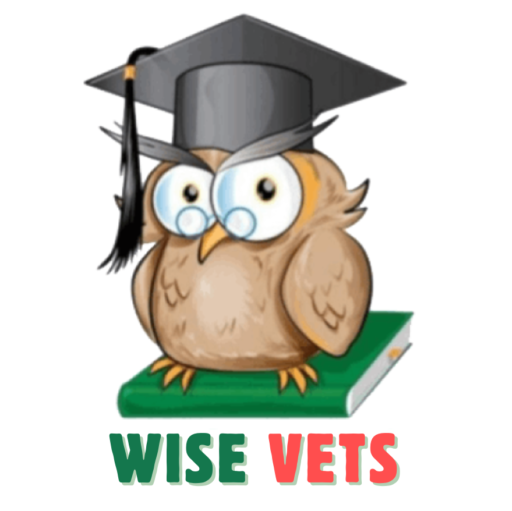Veterinary Doctor Course Overview
Becoming a veterinary doctor requires dedication and extensive education. This section covers the specializations available and the length of education required to become a veterinary professional.
Veterinary Specializations
Veterinary medicine offers a wide range of specializations, allowing veterinarians to focus on specific areas of animal care. These specializations require additional training, typically lasting 3-4 years, and board certification from specialty colleges.
Some of the recognized veterinary specialties include:
- Internal Medicine: Focuses on diagnosing and treating diseases in animals.
- Surgery: Specializes in performing surgical procedures.
- Dermatology: Deals with skin conditions and diseases in animals.
- Emergency and Critical Care: Provides urgent medical care for critically ill or injured animals.
- Oncology: Specializes in the treatment of cancer in animals.
For more detailed information on veterinary specialties, visit our section on recognized veterinary specialties.
| Specialization | Duration of Additional Training |
|---|---|
| Internal Medicine | 3-4 years |
| Surgery | 3-4 years |
| Dermatology | 3-4 years |
| Emergency and Critical Care | 3-4 years |
| Oncology | 3-4 years |
Length of Veterinary Education
The journey to becoming a veterinary doctor is a lengthy process, requiring a minimum of eight years of education. Here is a breakdown of the typical educational path:
- Undergraduate Education: A four-year bachelor’s degree in a relevant field such as animal studies or agricultural science is required.
- Veterinary School: After obtaining an undergraduate degree, students must complete an additional four years at a veterinary school to earn a Doctor of Veterinary Medicine (D.V.M) degree (Ross University School of Veterinary Medicine).
| Educational Stage | Duration |
|---|---|
| Undergraduate Degree | 4 years |
| Veterinary School | 4 years |
To practice independently, some veterinarians may choose to complete a one-year internship to gain additional experience under the mentorship of specialized and experienced veterinary teams. For those pursuing specialization, residency programs typically last 2-3 years, depending on the field of specialization.
For more details on the path to becoming a veterinary doctor, explore our sections on undergraduate education and veterinary college admission.
The comprehensive training ensures that veterinarians are well-prepared to provide high-quality care for animals in diverse settings. For more insights into veterinary education, visit our articles on veterinary education programs and veterinary degree curriculum.
Path to Becoming a Veterinary Doctor
Becoming a veterinary doctor involves a well-structured educational path, beginning with undergraduate studies, followed by veterinary college admission, and culminating in licensing examinations. Each step is crucial for those who aspire to pursue a career in veterinary medicine.
Undergraduate Education
The journey to becoming a veterinary doctor starts with completing an undergraduate degree, typically in a science-related field. This phase usually lasts four years and provides the foundational knowledge required for veterinary studies. Students are encouraged to focus on courses in biology, chemistry, and mathematics to prepare for the rigorous curriculum of veterinary college.
| Course | Importance |
|---|---|
| Biology | Understanding animal physiology and anatomy |
| Chemistry | Essential for pharmacology and biochemistry |
| Mathematics | Critical for data analysis and research |
Veterinary College Admission
Admission to veterinary college is highly competitive. Aspiring veterinarians must maintain a high GPA, gain relevant experience through volunteering or working with veterinarians, and obtain strong letters of recommendation. Depending on the institution, applicants may need to take exams such as the Medical College Admission Test (MCAT), Veterinary College Admission Test (VCAT), or Graduate Record Examination (GRE) (Learn.org).
| Requirement | Details |
|---|---|
| GPA | Maintain high academic performance |
| Experience | Volunteering or working with veterinarians |
| Recommendations | Strong letters from professors or professionals |
| Exams | MCAT, VCAT, or GRE |
For more information on veterinary college admission, visit our veterinary college page.
Licensing Examination
After completing veterinary college, aspiring veterinarians must pass the North American Veterinary Licensing Examination (NAVLE) to obtain their professional license. This exam evaluates a candidate’s knowledge and skills necessary for entry-level veterinary practice. The NAVLE is a critical step, as it ensures that only qualified individuals are licensed to practice veterinary medicine.
| Examination | Purpose |
|---|---|
| NAVLE | Assess knowledge and skills for veterinary practice |
Once licensed, veterinarians can pursue various career opportunities, ranging from private practice to research and academia. For detailed information on career paths, visit our page on diverse veterinary roles.
By understanding the path to becoming a veterinary doctor, aspiring veterinarians can better prepare themselves for a rewarding career in veterinary medicine. For more on the veterinary doctor course, check out our article on the animal doctor course.
Advanced Training in Veterinary Medicine
For those pursuing a career in veterinary medicine, advanced training is essential to gain specialized knowledge and skills. This training often includes internships and residency programs.
Internship Experience
After obtaining a Doctor of Veterinary Medicine (DVM) degree, many veterinary graduates choose to complete a year-long internship. This period of supervised training allows new veterinarians to work under the mentorship of experienced veterinary teams, providing them with the opportunity to hone their clinical skills and gain practical experience in a variety of settings.
During an internship, veterinary doctors can expect to rotate through different departments, such as surgery, internal medicine, and emergency care. This diverse exposure helps them decide on a potential specialty they may wish to pursue in the future. Internship programs are typically offered at veterinary schools, teaching hospitals, and private practices.
| Training Component | Duration |
|---|---|
| Undergraduate Education | 4 years |
| Veterinary School | 4 years |
| Internship | 1 year |
For more information on the path to becoming a veterinary doctor, visit our veterinary doctor course page.
Residency Programs
Veterinarians who wish to specialize further often enroll in residency programs. These programs typically last three to four years, depending on the chosen specialty. The American Veterinary Medical Association (AVMA) recognizes several veterinary specialties, each requiring additional training beyond the initial DVM degree (Ross University School of Veterinary Medicine).
Residency programs offer in-depth training in areas such as surgery, cardiology, oncology, and more. During a residency, veterinarians work closely with board-certified specialists, conducting research, performing advanced procedures, and managing complex cases. This intensive training prepares them for board certification in their chosen field.
| Specialty Training | Duration |
|---|---|
| Internship | 1 year |
| Residency | 3-4 years |
For those interested in the various fields of veterinary medicine, our page on veterinary science provides detailed insights into the different specialties available.
By completing internships and residency programs, veterinary doctors can acquire the expertise needed to excel in their careers, whether they choose to work in clinical practice, research, or academia. This advanced training ensures they are well-equipped to provide the highest level of care for their animal patients. For more details on veterinary education programs and career opportunities, check out our pages on animal studies and veterinary medicine.
Specialized Veterinary Fields
Specialized veterinary fields offer veterinarians the opportunity to focus on specific areas of animal health, allowing them to provide expert care in their chosen domain. This section will explore recognized veterinary specialties and the emerging trend of super-specialization within the profession.
Recognized Veterinary Specialties
The American Veterinary Medical Association (AVMA) recognizes 22 veterinary specialties, each requiring additional training beyond the initial Doctor of Veterinary Medicine (DVM) degree. These specialties cover a wide range of areas, from internal medicine to unique fields like animal welfare and poultry veterinary medicine (Ross University School of Veterinary Medicine).
Here is a table summarizing some of the recognized veterinary specialties:
| Specialty | Focus Area |
|---|---|
| Internal Medicine | Diagnosis and treatment of internal diseases |
| Ophthalmology | Eye care and surgery |
| Radiology | Imaging techniques and interpretation |
| Surgery | Surgical procedures and techniques |
| Emergency and Critical Care | Acute and life-threatening conditions |
| Animal Welfare | Ethical treatment and well-being of animals |
| Poultry Medicine | Health of poultry species |
| Laboratory Animal Medicine | Care of animals used in research |
| Theriogenology | Animal reproduction |
Veterinarians pursuing these specialties typically undergo one year of internship followed by two to three years of residency training (Ross University School of Veterinary Medicine). This extensive training equips them with the skills and knowledge required to excel in their chosen field.
Super-Specialization Trends
In recent years, the field of veterinary medicine has seen a trend towards super-specialization, similar to human medicine. Veterinarians are increasingly seeking additional training and becoming board-certified in specific sub-specialties. For example, a board-certified veterinary surgeon may further specialize in surgical oncology, focusing on cancer surgery for animals.
Super-specialization allows veterinarians to provide highly specialized care and stay updated with the latest advancements in their field. This trend is particularly evident in areas such as:
- Cardiology: Focusing on heart-related conditions and treatments.
- Neurology: Specializing in disorders of the nervous system.
- Oncology: Concentrating on cancer diagnosis and treatment.
- Dermatology: Addressing skin-related issues and diseases.
By pursuing super-specialization, veterinarians can offer cutting-edge treatments and improve the overall health and well-being of their animal patients. For more information on the path to becoming a veterinary doctor and the various educational requirements, visit our sections on veterinary college and veterinary medicine.
Evolution of Veterinary Medicine
Advancements in Veterinary Practice
The veterinary profession has evolved to encompass a wide range of sophisticated medical techniques. These advancements now mirror those found in human medicine. Veterinarians today are capable of performing complex surgeries, diagnostic procedures, and therapeutic interventions that were once only available to human physicians.
For example, veterinary professionals now utilize advanced imaging technologies such as MRI and CT scans for diagnosing animal health issues. This technological leap allows for more accurate diagnoses and better treatment plans. Another area of progress is the development of minimally invasive surgical techniques, which reduce recovery times and improve outcomes for animal patients.
Veterinary medicine is also seeing a trend toward super-specialization. Veterinarians are increasingly seeking additional training and becoming board-certified in specific areas. A veterinary surgeon, for instance, may further specialize in surgical oncology, focusing exclusively on cancer surgeries in animals (Ross University School of Veterinary Medicine).
Growing Demand for Veterinarians
The demand for veterinarians is on the rise across various fields. This growing need is driven by several factors, including an increase in pet ownership, heightened awareness of animal welfare, and the expanding role of veterinarians in public health and food safety.
There is a growing need for veterinarians in diverse areas such as:
- Food Inspection: Ensuring the safety and quality of food products.
- Biomedical Research: Contributing to advancements in medical science.
- Shelter Medicine: Providing care for animals in shelters and rescue organizations.
- Regulatory Affairs: Working with government agencies to enforce animal health regulations (Ross University School of Veterinary Medicine).
Moreover, the American Veterinary Medical Association (AVMA) recognizes various specialties that require additional training beyond the initial DVM degree. This typically involves a one-year internship followed by two to three years of residency training (Ross University School of Veterinary Medicine).
Veterinarians are also finding roles in sectors such as:
- Agribusiness: Managing livestock health in agricultural settings.
- Pet Food Companies: Ensuring the nutritional quality and safety of pet foods.
- Pharmaceutical Companies: Developing and testing veterinary medicines.
- Private Testing Laboratories: Conducting diagnostic tests for various animal diseases.
| Veterinary Sector | Roles and Responsibilities |
|---|---|
| Food Inspection | Ensuring food safety and quality |
| Biomedical Research | Advancing medical science |
| Shelter Medicine | Caring for shelter animals |
| Regulatory Affairs | Enforcing health regulations |
| Agribusiness | Managing livestock health |
| Pet Food Companies | Ensuring pet food safety |
| Pharmaceutical Companies | Developing veterinary medicines |
| Private Testing Laboratories | Conducting diagnostic tests |
The evolution of veterinary medicine is opening up numerous career opportunities for aspiring veterinarians. From clinical practice to research and regulatory roles, the field offers a diverse array of paths for those passionate about animal care. For more details on veterinary education and career opportunities, visit our articles on veterinary college and veterinary doctor.
Veterinary Education Programs
Aspiring veterinary doctors must undergo rigorous educational programs to ensure they are well-prepared to care for animals. This section will delve into accredited veterinary schools and the comprehensive curriculum involved in obtaining a veterinary degree.
Accredited Veterinary Schools
To become a veterinary doctor in the U.S., one must earn a Doctor of Veterinary Medicine (D.V.M) degree from an accredited institution. The American Association of Veterinary Medical Colleges (AAVMC) has accredited or granted “reasonable assurance” to 54 schools of veterinary medicine worldwide. Of these, 33 schools are located in the United States (North Central College).
| Country | Number of Accredited Schools |
|---|---|
| United States | 33 |
| Worldwide | 54 |
Accredited veterinary schools offer programs that meet stringent educational and clinical training standards. These institutions provide a blend of theoretical knowledge and practical experience, ensuring that graduates are well-equipped to enter the field of veterinary medicine.
For more information on selecting the right school, visit our page on veterinary college options.
Veterinary Degree Curriculum
The veterinary degree curriculum is designed to provide students with a thorough understanding of both the science and practice of veterinary medicine. Typically, vet school takes around four years to complete. The first three years consist of in-class studies, while the final year usually involves clinical rotations.
The curriculum is divided into several key components:
- Basic Sciences: Courses in anatomy, physiology, pharmacology, microbiology, and pathology form the foundation of veterinary education.
- Clinical Sciences: This includes courses in surgery, internal medicine, diagnostics, and treatment methodologies.
- Practical Experience: Clinical rotations provide hands-on experience where students apply classroom knowledge in real-world settings.
| Curriculum Component | Description |
|---|---|
| Basic Sciences | Anatomy, Physiology, Pharmacology, Microbiology, Pathology |
| Clinical Sciences | Surgery, Internal Medicine, Diagnostics, Treatment |
| Practical Experience | Clinical Rotations, Hands-On Training |
The Bachelor of Veterinary Medicine (BVetMed) program at the Royal Veterinary College, for example, emphasizes technological change, clinical and scientific progress, and stimulating teaching and learning methods (Royal Veterinary College).
Students are also required to gain animal experience under the supervision of a licensed veterinarian. This experience is crucial for applying to veterinary school and demonstrating a commitment to the field. For additional details on the curriculum and practical training, explore our pages on veterinary science and vet medicine.
By understanding the structure and requirements of veterinary education programs, prospective veterinary doctors can better prepare themselves for a successful career in animal care.
Practical Experience in Veterinary Medicine
Practical experience is a critical component of any veterinary doctor course, bridging the gap between theoretical knowledge and real-world application. This section explores clinical rotations and hands-on veterinary training, both of which are essential for aspiring veterinarians.
Clinical Rotations
Clinical rotations are an integral part of veterinary education, typically taking place in the final year of vet school. These rotations provide invaluable hands-on experience, allowing students to apply classroom learning to real-life scenarios. According to North Central College, the first three years of vet school consist of in-class studies, while the final year is dedicated to clinical rotations.
During clinical rotations, students work in various departments such as surgery, internal medicine, and emergency care. This exposure helps them understand the diverse aspects of veterinary science and prepares them for a wide range of veterinary roles. The Royal Veterinary College notes that students gain practical experience in RVC hospitals and collaborative practices, enhancing their clinical skills and problem-solving abilities.
| Rotation Type | Duration | Key Learning Areas |
|---|---|---|
| Surgery | 6-8 weeks | Surgical techniques, patient care |
| Internal Medicine | 6-8 weeks | Diagnosis, treatment plans |
| Emergency Care | 4-6 weeks | Critical care, emergency procedures |
| Exotic Animal Medicine | 4-6 weeks | Specialized care for exotic species |
| Large Animal Practice | 6-8 weeks | Farm animals, equine care |
Hands-On Veterinary Training
Hands-on veterinary training is essential for developing practical skills and building confidence. The BVetMed program at the Royal Veterinary College emphasizes practical experience through Animal Husbandry Extra-Mural Studies (AHEMS) and Clinical Extra-Mural Studies (ClinEMS).
AHEMS is undertaken during the first two years and focuses on animal handling, husbandry, and basic clinical skills. ClinEMS, on the other hand, is completed in the latter years and involves direct involvement in veterinary operations and understanding animal diseases.
The ‘spiral’ curriculum of the BVetMed program presents key concepts repeatedly at increasing levels of complexity. This approach ensures that students progressively build their knowledge and skills, from basic preclinical concepts to advanced clinical reasoning.
| Training Module | Duration | Key Skills Developed |
|---|---|---|
| Animal Husbandry (AHEMS) | 12 weeks | Animal care, handling, basic health |
| Clinical Studies (ClinEMS) | 26 weeks | Diagnosis, treatment, surgical skills |
For more detailed information on the curriculum and practical experience opportunities, prospective students can explore accredited veterinary education programs and veterinary degree curriculum offered by various institutions. This hands-on training is vital for ensuring that graduates are well-prepared to enter the field of veterinary medicine and excel in their careers.
Career Opportunities for Veterinary Doctors
Veterinary Practice Settings
Veterinary doctors have a wide array of practice settings to choose from, catering to different species and medical needs. In the United States, approximately two-thirds of veterinarians work in private or corporate clinical practice. These practitioners provide veterinary care for a range of animals, including traditional pets, exotic species, horses, and farm animals. They also offer advice on production medicine.
Some common practice settings include:
- Small Animal Practices: Focus on pets like cats, dogs, and small mammals.
- Large Animal Practices: Cater to farm animals such as cows, horses, and pigs.
- Mixed Animal Practices: Provide care for both small and large animals.
- Exotic Animal Practices: Specialize in non-traditional pets like reptiles, birds, and small mammals.
- Equine Practices: Dedicated to horse care and treatment.
Diverse Veterinary Roles
Veterinary doctors can explore diverse roles beyond traditional clinical practice. These roles include opportunities in education, research, industry, and public health.
| Sector | Role Description |
|---|---|
| Academia | Instruct veterinary and technology students, conduct research, provide animal care, and develop continuing education programs (AVMA). |
| Industry | Work in management, regulatory affairs, technical sales and services, and agribusinesses. Engage with pet food companies, pharmaceutical companies, and the agricultural chemical industry. |
| Public Health | Participate in disease control and prevention, food safety, and zoonotic disease research. |
| Government | Contribute to regulatory agencies, animal welfare organizations, and public policy development. |
Veterinary doctors are essential in various sectors, ensuring animal health and contributing to public health and safety. For more information on veterinary education and career paths, visit our articles on veterinary college, veterinary science, and veterinary medicine.





